There’s something quite magical about jumping into the cool ocean as dawn breaks over the Coral Sea. Soft clouds gradually come into focus while the horizon erupts as the first rays of warming light animate the day. Butterflies of anticipation are swirling through me as I float in the water, taking in nature’s opening act while preparing to immerse myself in the frenetic, underwater world below.
As I bob here, smiling to myself, waiting for Danielle to take the plunge, I can’t help thinking that this is what Great Barrier Reef liveaboard trips are all about.
Those serene moments when no other boats are around and you feel like you have the entire reef as your own personal playground.
And then you drop into the dappled light of morning on the reef and the sub-aqua rush hour hits you like a freight train, and you forget everything other than the riot of colour and activity in front of you.
If you’re thinking about diving in Australia and wondering whether a Great Barrier Reef liveaboard is for you, then we’ve got you covered. In this post we describe life on a liveaboard while answering some of the key questions you may have about liveaboard diving trips in Australia.
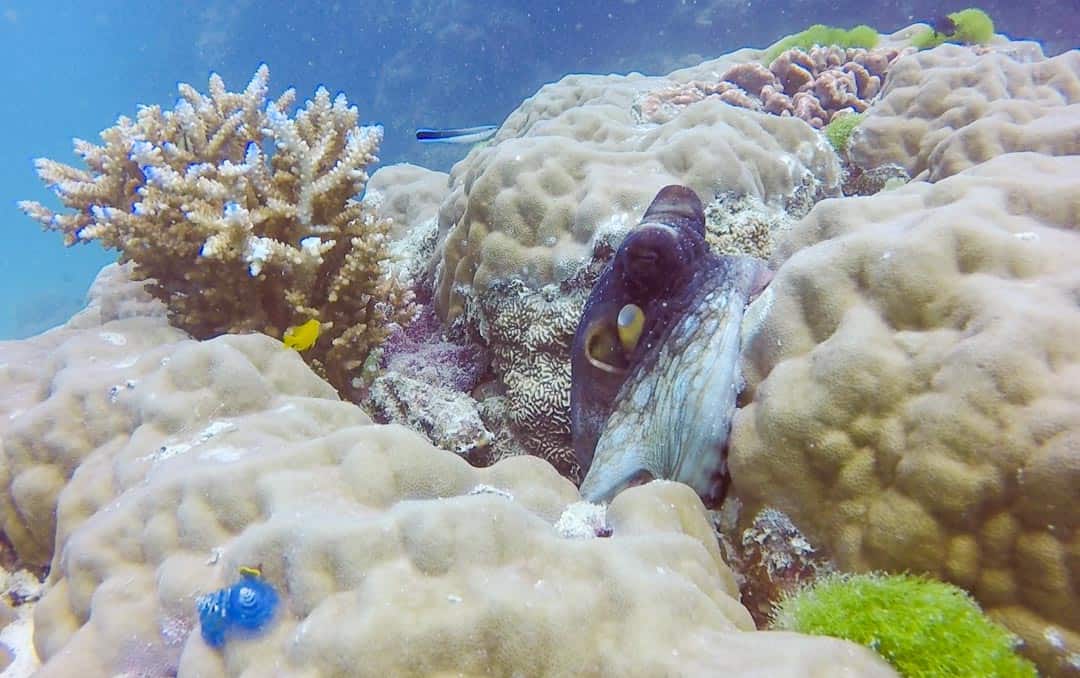
How Comfortable Are Liveaboard Diving Boats?
We’re veterans of a few liveaboard dive trips now and can honestly say we’ve never been on a boat we thought was uncomfortable. That said, there are undoubtedly many price points in the barrier reef diving market, ranging from cramped day trips on packed reefs, to multi-day liveaboards that traverse the uncrowded outer regions of the reef in relative luxury. It all depends what you want, and more importantly, what you can afford. On this trip we wanted to strike a balance between affordability and comfort, and found exactly what we were looking for on Divers Den’s OceanQuest vessel.
We’ve dived on OceanQuest before, in 2012, and felt the vessel very comfortable then, but the new-look, fully refurbished OceanQuest is a cut above. Our cabin was a decent size, with two fairly large windows to enjoy the views, and comfortable twin beds (there are doubles but none were available when we booked). The ensuite bathroom was bigger than we expected, with toilet, sink, and a decent hot water shower. There’s also a small desk in the room and enough power points to recharge camera gear between dives.
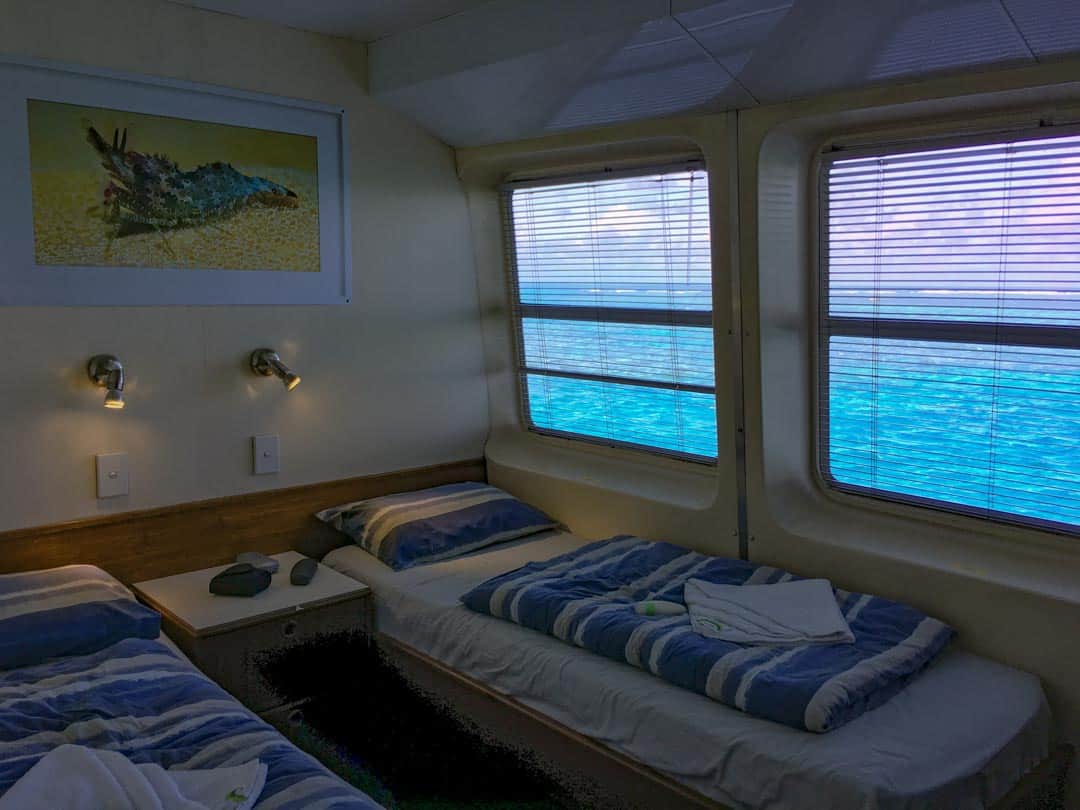
As liveaboard boats go, the OceanQuest is also pretty roomy and comfortable. There are a couple of sun decks where guests can relax on sun lounges or chairs and enjoy the views, the upstairs bar has plenty of room for those that want a post dive beverage (although remember, on this boat at least, your first drink of the day means you’ve done your last dive), and the dining room can easily sit the 48 guests plus staff that the boat accommodates.
What’s The Food Like?
One thing’s for certain, you’ll never starve on a liveaboard diving trip, let alone lose any weight, despite all the aquatic exercise. Scuba diving is hungry work, especially when you’re diving up to 5 times a day, and you’ll need some serious energy to keep up with the program.
It’s fair to say the standard of food does vary considerably, depending on the trip you choose. We’ve been on dive safaris where the food was every bit as good, if not better, than most restaurants you’ll find on dry land, and served à la carte. We’ve also been on trips where the food has been more simple, and generally served buffet style. Either way, you’ll have plenty of carbs and protein to fuel your many dives.
On our most recent trip, there were vegetarian options at every meal, and we understand Divers Den will try to accommodate other dietary requirements upon request, just give them a call to check before you go aboard.
What Should I Pack?
We’d advise travelling as light as possible. Most dive boats are pretty informal, and to be honest, when you’re not in swimming gear, you’ll be in various stages of drying off for most of your trip anyway.
Ideally have a couple of sets of swimming gear (so you can switch out damp and dry gear), a set of clothes you don’t mind wearing when wet, along with a beach towel, and a couple of sets of clothes you’ll only wear in the evening or when fully dry.
Do I Need To Bring My Own Dive Gear?
While we brought most of our own dive gear on this trip, all Great Barrier Reef drive trips will give you the option to hire gear. For our trip, dive gear was included in the price if we wanted to use it, but some operators may charge extra for this so take this into consideration when researching liveaboard options. Whenever we’ve needed to hire dive gear on a liveaboard trip, it’s always been in good condition and well looked after.
What Are The Dive Facilities Like?
To be honest, when it comes to dive time, we always feel really spoilt on liveaboard diving trips, and OceanQuest was no different.
As you descend to the dive deck for your first dive, locating your gear in your own dedicated spot, you’ll realise how well looked after you’re going to be. Your BCD and regulator will be waiting for you, attached to a full tank, with your fins, dive mask, and weights all there ready to go. This is how your gear will be organised for every dive, ready for you to get ready, buddy check, and jump in – it doesn’t get much easier than this.
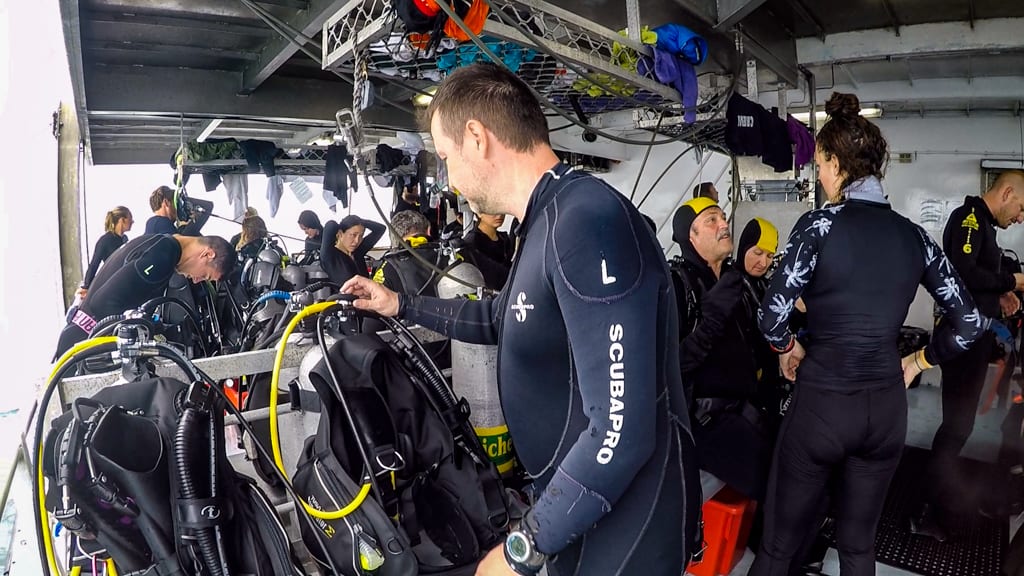
Wetsuits, booties and stinger suits are all located on the upper deck which means you can get suited up away from the dive deck with more space to struggle into your wet gear without constantly bumping into others.
The upper deck is also where dive briefings take place, providing a detailed overview of the dive site, weather conditions, suggested dive routes, and an introduction to some of the critters you’re likely to meet under the water.
Many liveaboard diving trips will assume you’ll be diving independently with your buddy, so the dive briefing is also the time to organise a buddy if you need one, and if required, a dive guide for the site (guided dives usually costs extra).
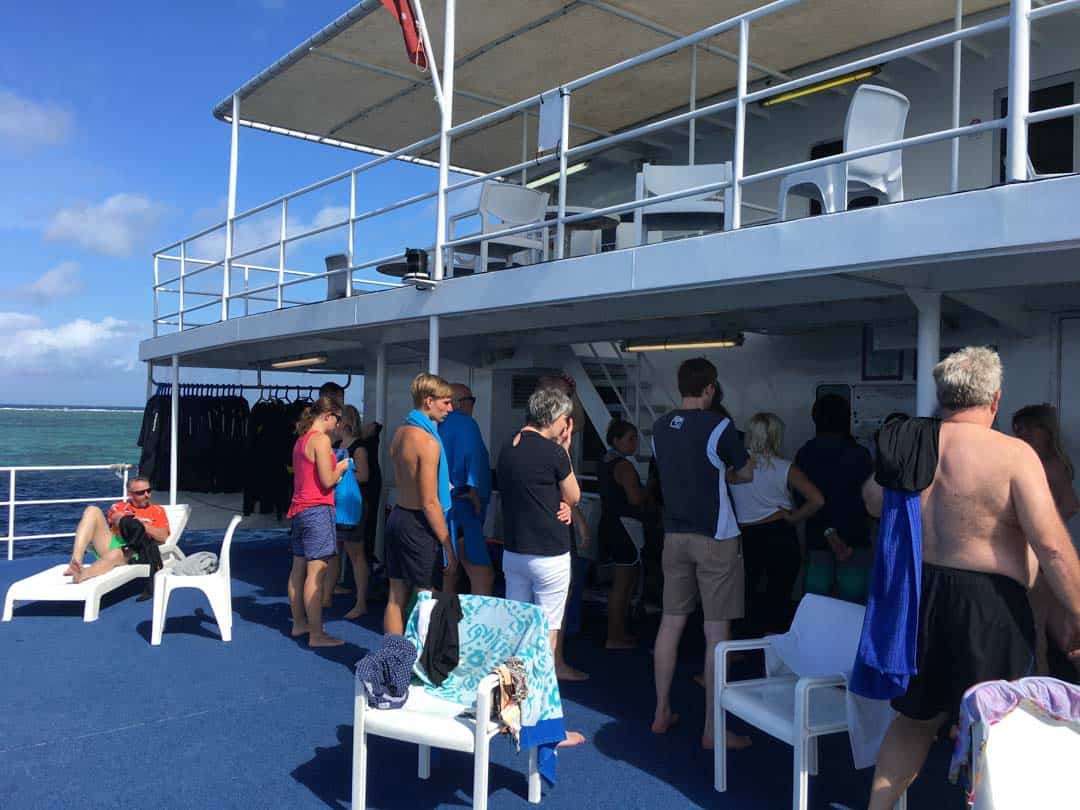
What’s The Dive Program?
We travelled to the Great Barrier Reef aboard a day boat, doing two dives on that boat before transferring to OceanQuest for the rest of our trip. Over the course of our three-day trip, we dived at five different locations on Norman Reef, however, depending on conditions we understand OceanQuest also visits Saxon and Hastings reefs.
In general, we only dived at locations where we were alone, or sharing with just one other boat. As a result, it felt like we pretty much had the reef to ourselves, only occasionally coming across other divers while under the water.
The overall dive program for our 3 day / 2 night trip consisted of:
- Day 1 – 3 daytime dives, and a night dive
- Day 2 – 4 daytime dives and a night dive
- Day 3 – 3 daytime dives.
These dives are generally undertaken in a buddy team without a guide, unless you ask for one to be assigned (for a fee). Diver’s Den also exclusively offers an optional flouro night dive experience, where you can pay a supplement to don mask filters and use ultra-violet torches for a different perspective of the underwater world at night – well worth it in our opinion.
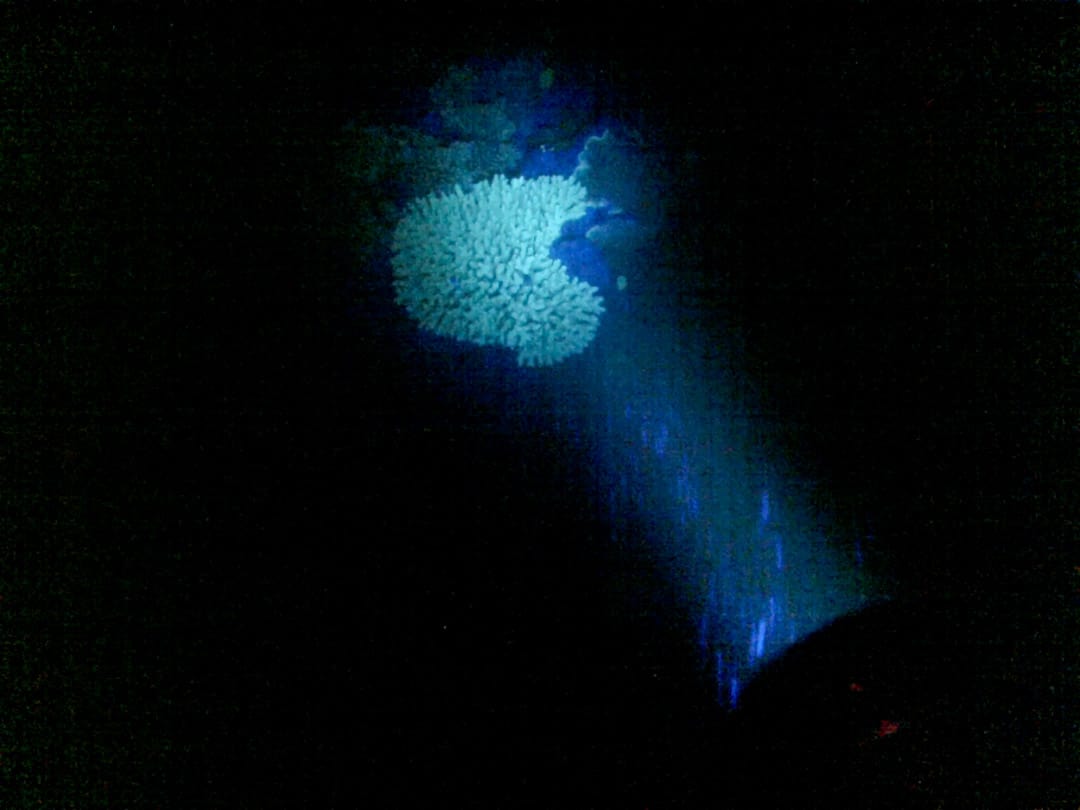
Pre-dive briefings always include site navigation, and we felt confident enough to navigate our daytime dives without a guide; for the most part, we even managed to ascend near(ish) the boat. At night though, we opted for a guide!
Just remember though, if you’re navigating your own dives, make sure you and your buddy agree on a clear dive plan before entering the water, that you both pay attention to the landscape, and have agreed on any specific communication signs or devices you plan to use during your dive.
I can tell you from experience that there’s nothing quite like having an ‘argument’ at the bottom of the ocean, and having no idea what your dive buddy is trying to tell you.
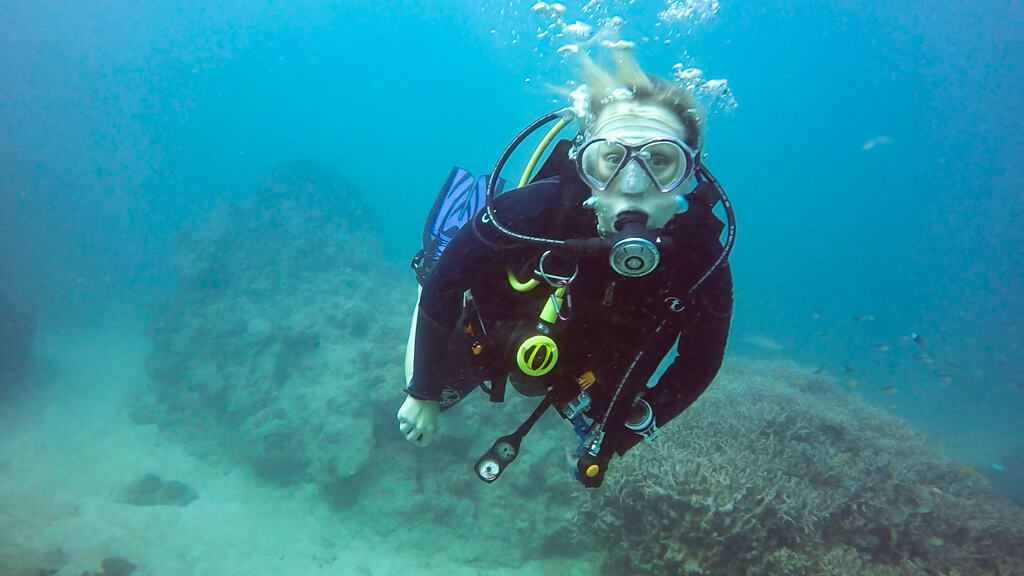
What Level Of Experience Do I Need?
Most Great Barrier Reef diving tours will take divers of all levels as well as snorkelers. Many trips will also offer a range of courses to certify divers during your trip. Whatever level you are though, just remember to always dive safely within the limits of your level of certification.
During our first dive trip from Cairns in 2012, Dan had only done a handful of dives and we were both pretty inexperienced. We still opted to navigate dive sites ourselves, and while stressful at times, it was a great way of improving our navigation and underwater observation skills. Despite getting disoriented on our first attempt and coming up a fair way from the dive boat, we persisted and got better over time (dive crews keep a very close watch on things while divers are in the water though and will send a boat to collect divers if they surface with problems or are too far away).
If you’re unsure whether self-navigation is for you, or are nervous about the prospect, chat about it with the dive crew before diving. The dive leader and professional dive staff will be able to advise you on the best approach and suggest the most suitable locations and strategies for divers to develop their navigation skills.
How Safe Is Liveaboard Diving?
Ok, so most divers have probably seen Open Water, a film inspired by the tragic events surrounding the disappearance of Tom and Eileen Lonergan on the Great Barrier Reef in 1998. And most of us have a small, nagging fear somewhere deep in the recesses of our mind about the possibility of our dive boat leaving without us.
Fear not, things have changed significantly on the Great Barrier Reef since 1998, and on OceanQuest at least, every diver is logged in and out of the water, with a signature, and there’s a strict 50 minute limit for each dive. Outside of diving times, head counts were a regular occurrence throughout the day, and especially before the boat was moved.
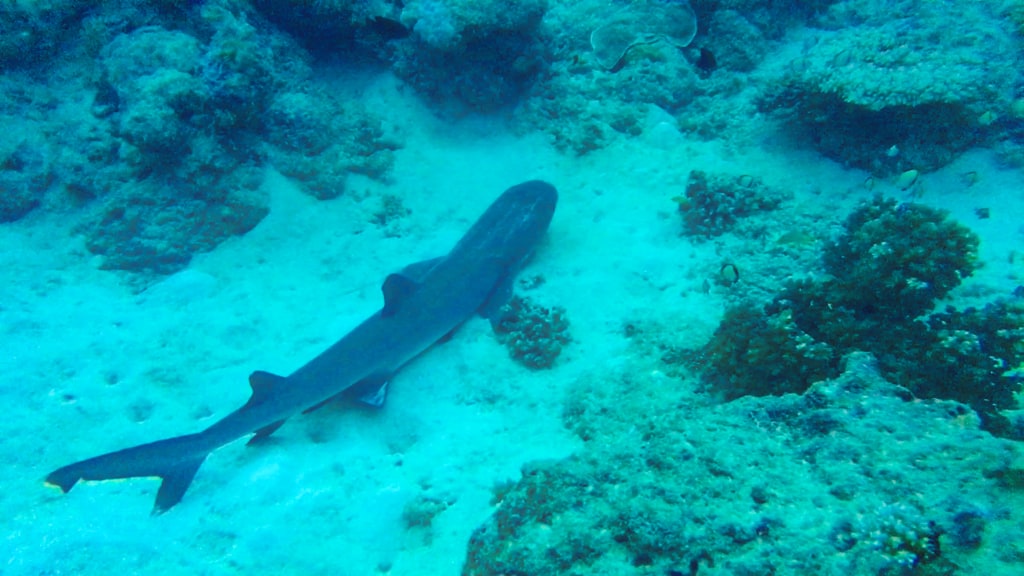
So What’s The Diving Actually Like?
Diving in Australia is on the top of many a bucket list, and for most people this means scuba diving the Great Barrier Reef.
Since our first Great Barrier Reef liveaboard trip back in 2012, we’ve been itching to go back, especially now we’re both advanced divers with many more dives under our weight belts.
That first trip will always have slightly mythical status for us in our dive consciousness, with perfect conditions, exceptional coral, abundant fish life, and many, many, close encounters with turtles, sharks and other reef dwellers.
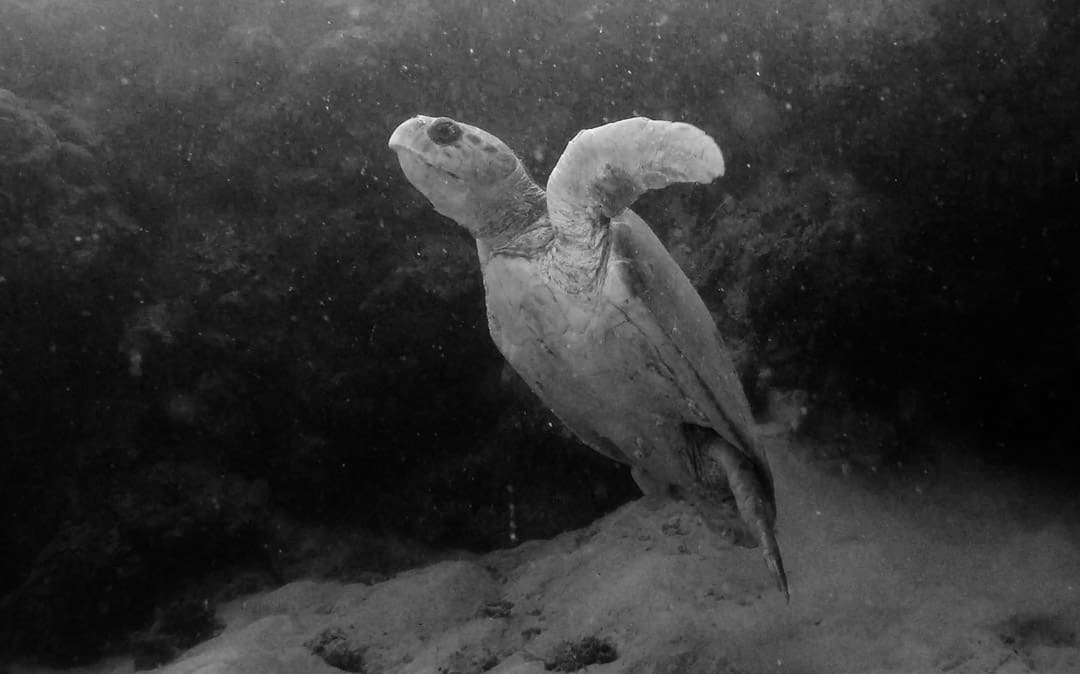
Since then, there’s been plenty of media attention about the health of the Great Barrier Reef, and the impacts of coral bleaching, industrial pollution, over fishing, and weather events such as cyclones, all of which are said to have contributed to a decline in the health of the reef. So we booked this trip with some trepidation, unsure what we would find when we finally got under the waves again in the Coral Sea. This wasn’t helped by severe storms and flooding in Queensland in the week leading up to our trip.
In truth, it’s impossible to compare the two experiences. One was in outstanding conditions with mostly great light, while our more recent trip had relatively low visibility, and less consistent sunlight, so the reef felt a little less vibrant. Whether this had more to do with the conditions than ecological damage, I can’t really say.
Despite this, the topography of the dive sites was always interesting, and we were never short of sea life to keep us entertained, with colourful reef fish, sharks, stingrays, turtles, cuttlefish, octopus, and innumerable wee critters like nudibranches and crustaceans keeping us company under the waves.
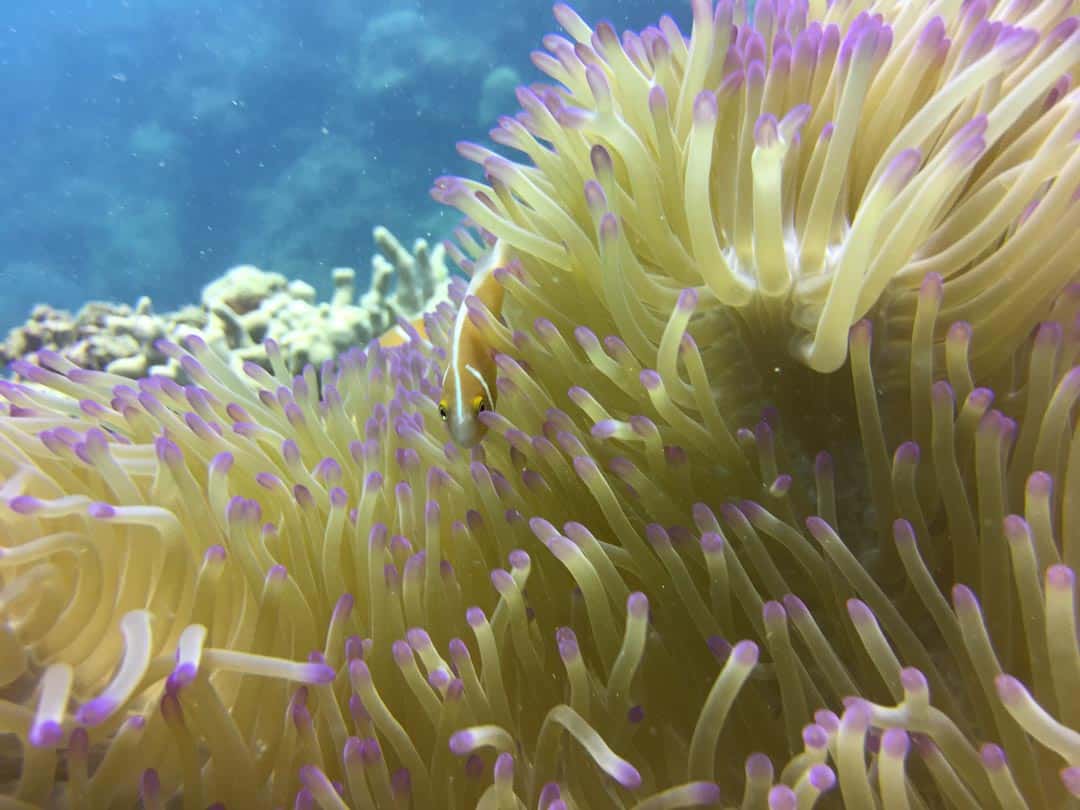
That’s the beauty of diving really, no two experiences – even in the same place – are ever the same.
Don’t just take our word for it though. We’ve put together a video compilation of our time under the waves on this latest visit to the reef.
I have a feeling we’ll be back!
Got more questions about liveaboard diving on the Great Barrier Reef? Ask us below!
